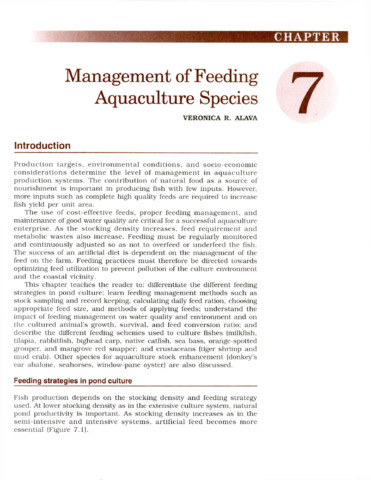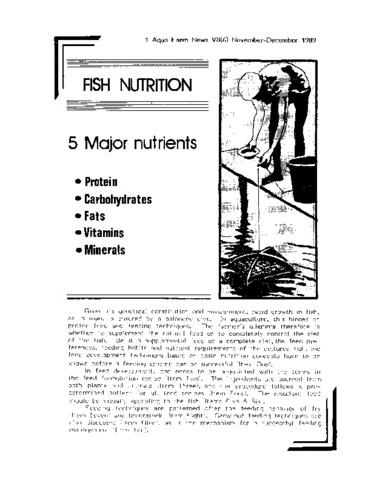Semi-mass culture of the dinoflagellate Gymnodinium splendens as a live food source for the initial feeding of marine finfish larvae
- Global styles
- MLA
- Vancouver
- Elsevier - Harvard
- APA
- Help

View/
Date
1997Page views
1,830ASFA keyword
AGROVOC keyword
Taxonomic term
Metadata
Show full item record
Share
Abstract
A technique was developed for the semi-mass culture of the unarmored dinoflagellate, Gymnodinium splendens under laboratory conditions. A maximum cell density of 4600 to 6800 cells ml−1 was observed within 8 to 11 days of culture. An initial feeding test for 8 days with three important marine finfish larvae showed that red spotted grouper, Epinephelus akaara preferred G. splendens fed 200 cells ml−1 with 44% survival. The Japanese stripe knife jaw, Oplegnathus fasciatus, attained 22% survival fed a combination of G. splendens and rotifers (200 cells ml−1 and 5 ind. ml−1, respectively). Red sea bream, Pagrus major larvae did not respond well to the initial feeding of G. splendens alone. Red sea bream were observed to be solely dependent on rotifers (5 ind. ml−1) as initial food. Gymnodinium splendens may be used as a live food in the initial feeding of red spotted grouper larvae (E. akaara) to reduce mortality and to further enhance growth during the critical first few days of rearing.
Suggested Citation
Rodriguez, E. M., & Hirayama, K. (1997). Semi-mass culture of the dinoflagellate Gymnodinium splendens as a live food source for the initial feeding of marine finfish larvae. Hydrobiologia , 358(1-3), 231-235. https://doi.org/10.1023/A:1003161520584
Type
ArticleISSN
0018-8158Collections
- Journal Articles [1258]
Related items
Showing items related by title, author, creator and subject.
-
Management of feeding aquaculture species
Alava, Veronica R. (Aquaculture Department, Southeast Asian Fisheries Development Center, 2002)This chapter teaches the reader to: differentiate the different feeding strategies in pond culture; learn feeding management methods such as stock sampling and record keeping, calculating daily feed ration, choosing ... -
Fish nutrition
Carreon-Lagoc, Julia; Southeast Asian Fisheries Development Center, Aquaculture Department (Aquaculture Department, Southeast Asian Fisheries Development Center, 1989) -
Aquaculture development in Thailand
Sirikul, Boonsong; Luanprida, Somsak; Chaiyakam, Kanit; Sriprasert, Revadee (Aquaculture Department, Southeast Asian Fisheries Development Center, 1988)Aquaculture practised in Thailand is in the form of pond culture and cage culture in freshwater, brackishwater and coastal areas. The main species cultured include freshwater prawns, brackishwater shrimp, cockles, mussels, ...





